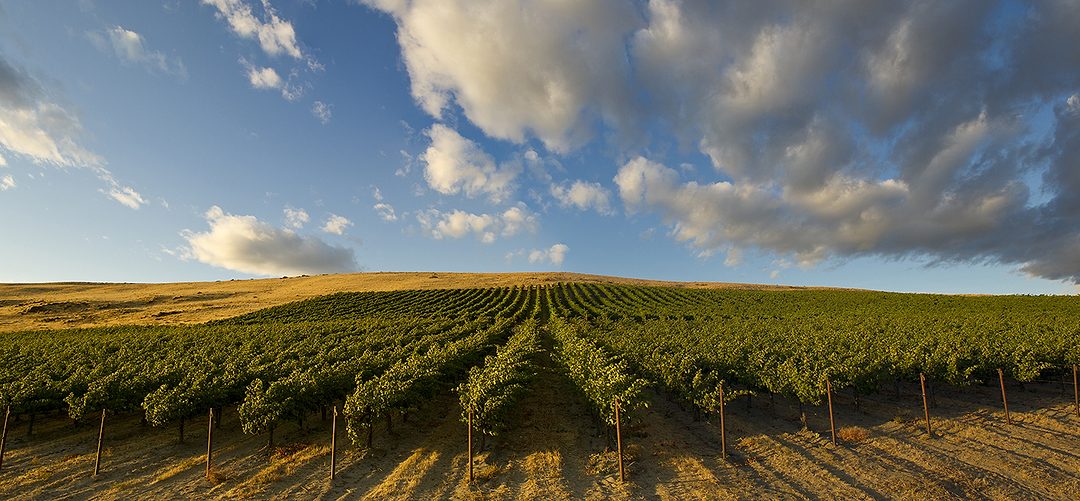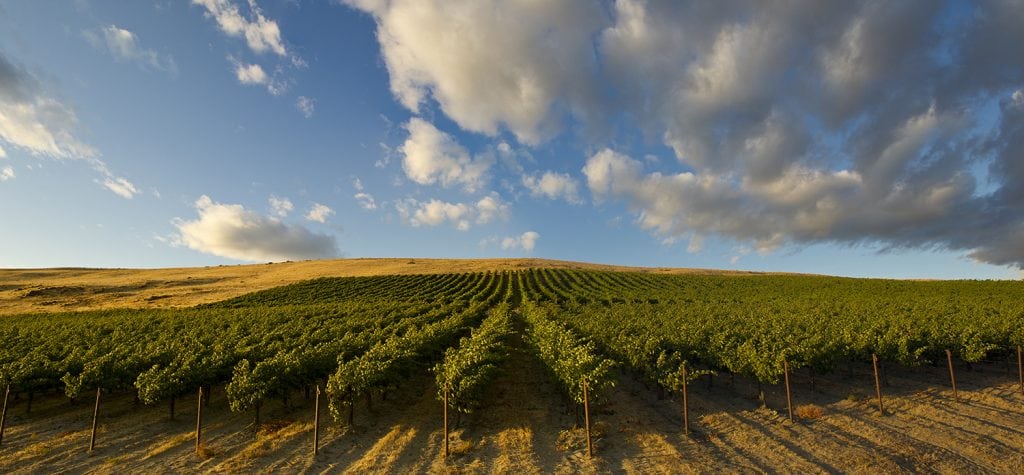
Home » Vines reign supreme: State boasts viticulture advantage
Vines reign supreme: State boasts viticulture advantage

May 6, 2018
Growing high-quality wine grapes that become award-winning wine and millions of tons of juice grapes that become America’s best-known grape juices make up the viticulture industry in Washington state.
Washington’s massive grape crop is among the 10 highest-valued crops in the state, ranking ninth in 2016, according to the U.S. Department of Agriculture, after producing nearly a half-million tons of grapes valued at $359 million. The 2016 yield was especially abundant, up a quarter over the previous year due to a successful crop of wine and juice grapes.
Most of these grapes are destined to become wine as Washington sits behind California as a leading producer of premium wine for the U.S. It’s carved out a niche for premium taste without a premium price.
“The inputs are a lot less. The acreage cost is way more in Napa,” said Steve Warner, president of the Washington State Wine Commission. “Here, you can go in and still plant a vineyard.”
New growers are getting into the business without a past history of farming.
“There’s still room for growth, whereas California is planted out and they’ve run out of water,” said Dick Boushey, a longtime grower and vineyard manager. “You can come here for a quarter of the investment and get into the business.”
Washington has nearly doubled its acreage of wine grapes in little more than a decade, from 30,000 acres in 2006 to 55,000 today. Industry experts predict it will swell to 79,000 acres by 2023.
Ste. Michelle Estates President and CEO Ted Baseler envisions even greater growth, of up to 200,000 acres of wine grapes — four times what is currently planted — in 25 years.
What’s fueling the rapid growth is a reputation for better wines at a better price.
“Washington knocks it out of the park when it comes to the quality of wine you get compared to the price you pay,” said Trent Ball, agriculture department chairman for Yakima Valley College. “Ste. Michelle is driving the growth. As they grow and expand, the Washington market is competing on a global scale.”
Ste. Michelle Wine Estates gobbles up two out of every three wine grapes grown in the state.
Much of the expansion of Washington’s wine grape acreage comes from current growers, including some who remove juice grapes to replace them with higher-valued wine grapes. But that doesn’t work for every grower.
“There is temptation to do that. The challenge is finding contracts to do that. That’s the struggle with a smaller grower,” said Ryan Schilperoort, owner of Ryan Schilperoort Farms in Sunnyside.
Contracts are tied to a wine grape crop, with growers making arrangements to sell the fruit before it’s grown.
“When you pick other crops, you put them on a truck and hope someone sends money back,” Boushey said.
The demand on Washington’s wine grapes is also market-driven, as the increasing popularity of red wine has replaced a dominance of white wine grapes grown in the state in the past few years. It’s a challenge to stay ahead of consumers’ expectations.
“If you need more wine, it’s a three- to five-year process,” Ball said. “So you’ve got to be forward-thinking, knowing what’s the demand and where the market’s going so you can bridge that gap.”
Sagemoor Vineyards, just north of the Tri-Cities, grows about 60 percent of its grapes for red wine and 40 percent for white.
“In five years, we could be close to 70 to 30,” said Kent Waliser, director of vineyard operations. “The sites we have are warm and there seems to be a trend in Washington to move white wine to cooler sites. As we do that, the white wines are going to get better and more interesting.”
It’s not just growing the grapes but providing the infrastructure to process them once picked. “We exceeded what we could actually crush and process. New vineyards are putting out earlier, more per acre and better quality. We left a lot of fruit on the vines last year because we didn’t have room for it,” Boushey said. This can be an added strain as Washington adds two to three wineries, on a net basis, each month.
“If a winery wants to grow really quickly, it’s hard to find contracts with growers to meet their demand. Some may start their own vineyard,” Warner said.
Despite the growing global thirst for Washington wine, Warner would like to see more bottles poured here at home. Across all the wine sales in Washington, less than half of the sales were on bottles made in the state.
“We have a market share of 40 percent in Washington,” Warner said. “Every other wine-producing region has at least a 70 percent market share in their own market.”
He’d like to see wine drinkers get behind local growers and winemakers in the same way many embrace the farm-to-table concept. “Support our local farmers and local winemakers. We’d like locals to demand locals,” he said.

Juice grape growers also would like to improve the perception and understanding of the product that comes from their crop.
Consumers have moved away from fruit juices in recent years, and 100 percent grape juice tends to be the highest priced in the market. Growers say grape juice’s nutritional benefits, like being chock-full of potassium, also are often overlooked.
Schilperoort said he gets it, when compared to wine.
“There’s not too much romance in a glass of grape juice. But it’s actually good for you. It’s a heart-healthy product with natural sugar,” he said.
Grape juice that isn’t certified organic still is likely to be grown mostly naturally, without much need for insecticides or fungicides since disease is almost nonexistent among Washington juice grapes.
While still the nation’s largest producer of juice grapes, Washington growers face their biggest competition from spots on the East Coast, where Concords were first planted.
New York produces the second most juice grapes domestically, followed by farms planted around Lake Erie, like Michigan and Pennsylvania.
Unlike farmers in the East, Washington’s Concord growers must irrigate their crop. The set-up costs for irrigation and trellis systems can cost up to $8,000 an acre, which can be a deterrent for growers looking to increase acreage.
As a Concord grape grower, Schilperoort, a third-generation farmer, is confident the dip in demand is only temporary.
“Concords have always been a little cyclical as far as pricing. They dip and they climb. We’re in a cycle where it’s been fairly low, but it’s taking a while to climb out of the basement,” he said.
He hasn’t reduced any acreage, and recently pulled 10 acres of old Concord vines to replace them with new ones.
“Everyone in the industry says it will and I believe it will, it’s just taking time,” Schilperoort said.
Juice grape growers continue to supply to national brands like Welch’s, Smucker’s and Tree Top, while wine grape growers are starting to see their own names on the bottles they had a hand in producing.
“Literally and figuratively, the wine is made in the vineyard,” Waliser said.
Sagemoor has begun acquiring wines from some of the customers it has sold grapes to as a way to showcase and raise awareness of the vineyards “where the wine is made to start with.”
Those vineyards across Washington are crushing their markets, from mass production of Concord grapes to increasing a worldwide appetite for their wine.
“It’s amazing how we’ve grown and become a significant player in the world even just in 10, 20 years. Now we can be as big as we want to be,” Boushey said.
Agriculture + Viticulture
KEYWORDS focus agriculture viticulture 2018





